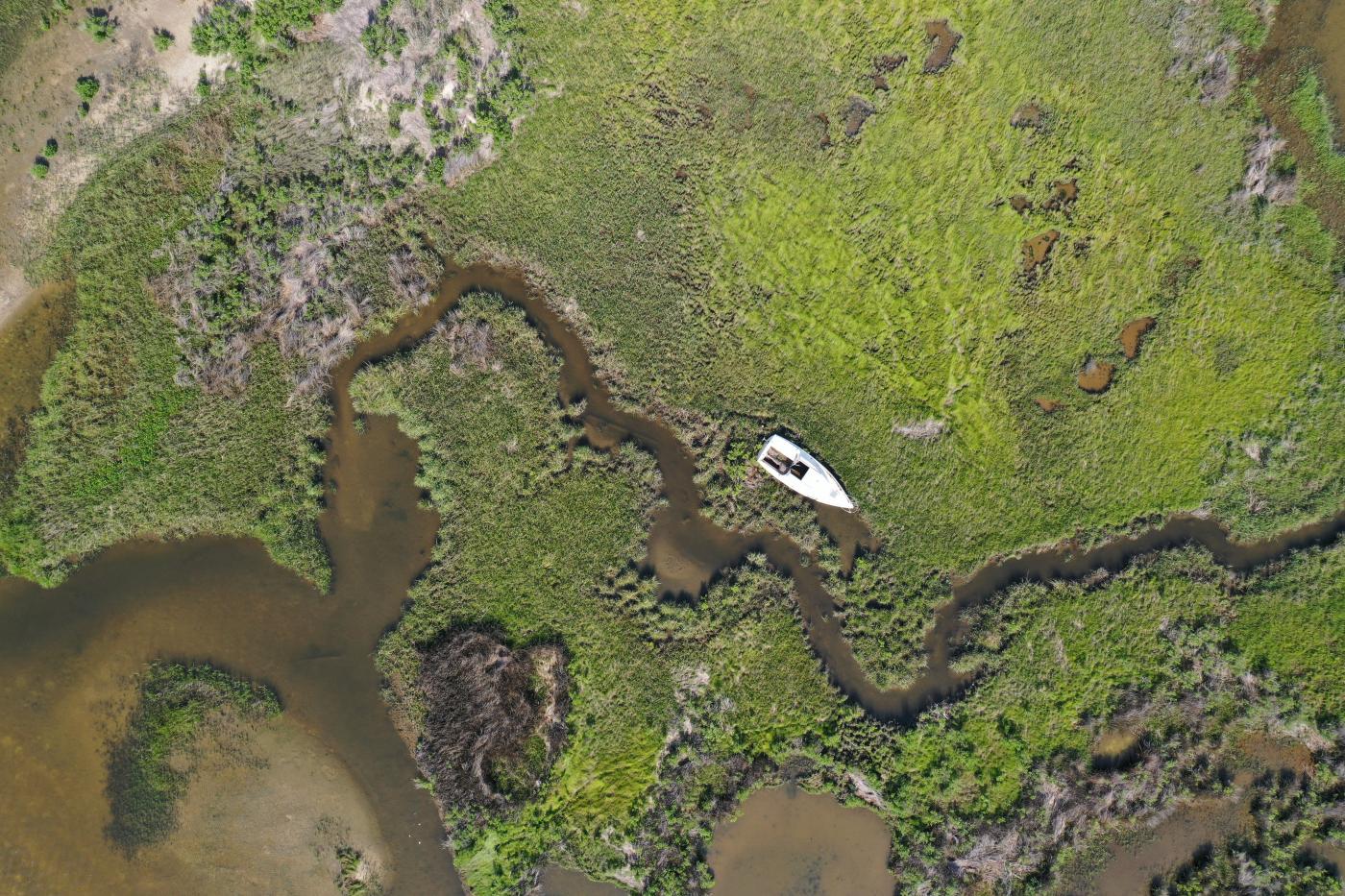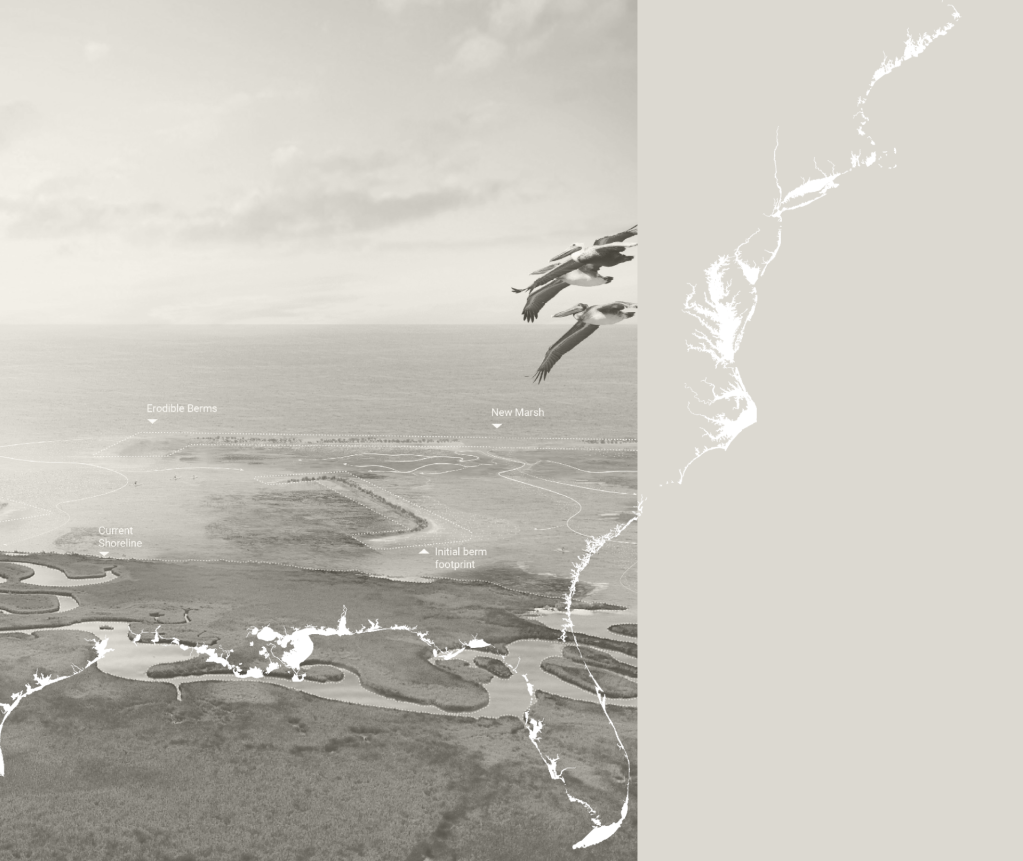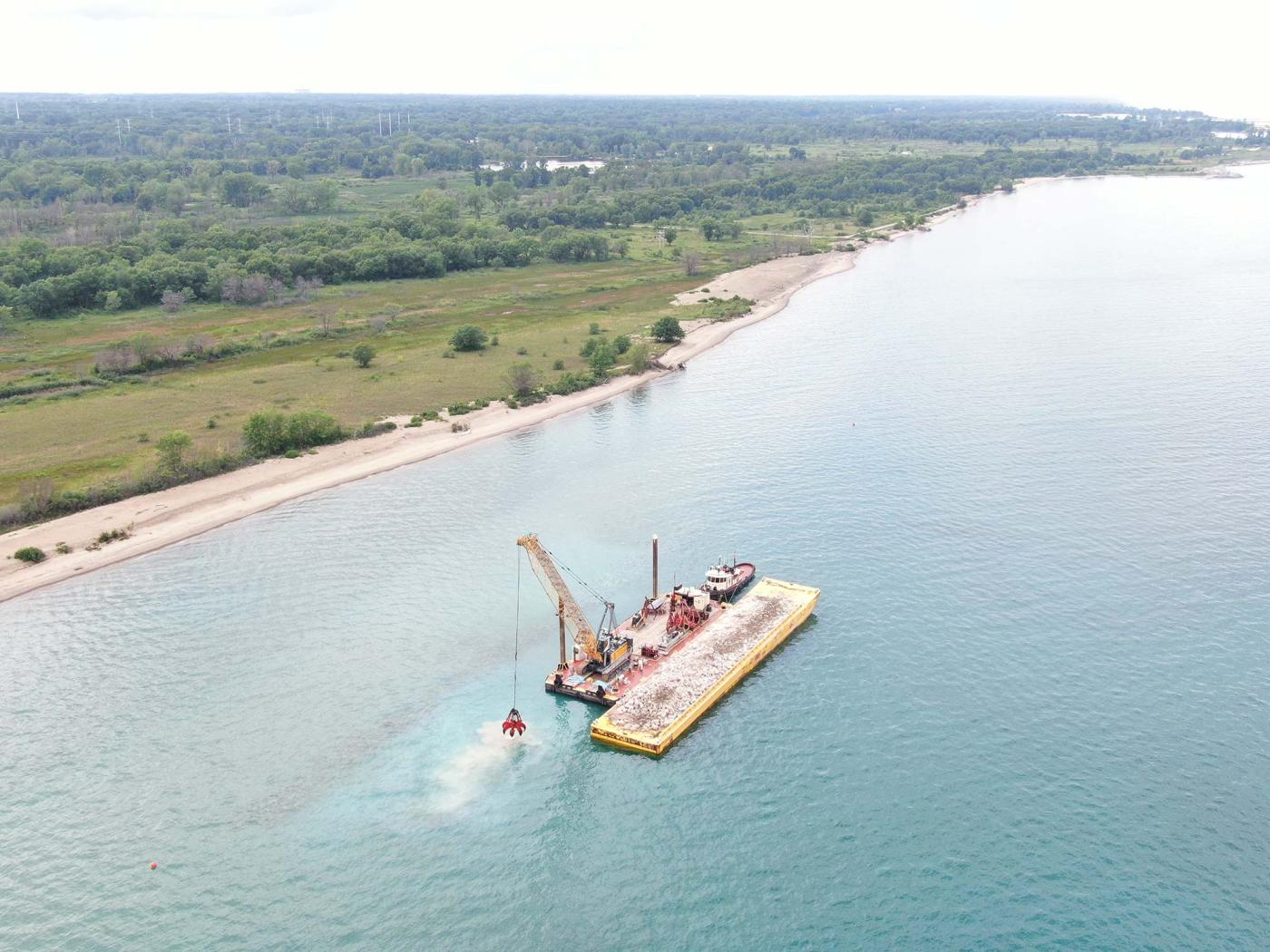NATURAL INFRASTRUCTURE LAB
ABOUT THE NATURAL INFRASTRUCTURE LAB —
The Natural Infrastructure Lab (NIL) works to develop innovative and culturally significant forms of coastal and riverine infrastructure through landscape design research. We partner with governmental, non-profit, and private entities to focus on the potential of plants, sediments, currents, waves, rocks, and the historical and contemporary human practices that engage them to deliver the services society relies on, including coastal resilience, landscape migration, and flood protection. Our research products work across scales and provide partners with the concepts, forms, and data-driven insights needed to implement innovative natural infrastructure that enhances human and ecological health over time.
LAB DIRECTORS —
Brian Davis, Associate Professor, Landscape Architecture [mudlands@virginia.edu]
Michael Luegering, Assistant Professor, Landscape Architecture [ml6wb@virginia.edu]
LAB RESEARCH STAFF —
Emma Potter, Project Associate for UPWINS [hgt8zy@virginia.edu]
Adrian Robins, Research Specialist [adrianrobins@virginia.edu]
Ruby Zielinski, Program Manager [fjw2zm@virginia.edu]
CURRENT RESEARCH PROJECTS AT NIL —

PRESERVING COASTAL PARKLANDS
In collaboration with the National Park Service (NPS), The Nature Conservancy, and ETZ Strategies, the Natural Infrastructure Lab is partnering on Preserving Coastal Parklands supported by the U.S. Army Corps of Engineers (USACE) and their Engineering with Nature (EWN) Program for a three-year site-based research project to develop and test Natural and Nature-Based Features (NNBFs) for three coastal national parks in the Chesapeake Bay region: Colonial National Historic Park (NHP), Harriet Tubman Underground Railroad National Historical Park (HATU), and Assateague Island National Seashore (ASIS). Together, the parks represent a range of environments and issues facing coastal parks in the Chesapeake Region more broadly. The team will work to develop NNBF designs that provide natural alternatives to flood control and other landscape management needs of these coastal parks and their associated communities. The project aims to preserve the natural and cultural resources of the parks that are valued for their capacity to provide enjoyment, education, and inspiration for current and future generations that are under threat from sea level rise.
Project Team: Brian Davis (UVA, Landscape Architecture), Erin Putalik, PhD (UVA, Architecture and Landscape Architecture), Michael Luegering (UVA, Landscape Architecture)
Collaborators: Cathy Johnson (National Parks Service), Jackie Specht (The Nature Conservancy), Isaac Hametz (ETZ Strategies), Jeff King (Engineering with Nature)
Researchers: Marantha Dawkins (PhD in the Constructed Environment), Adrian Robins (MLA '24), Alex Daley (MLA '24), Yi Zhu (MLA '23)
Funding: $540,000
Partners: EWN, NPS, TNC, ETZ Strategies
URBAN PLANNING WITH INTEGRATED NATURAL SYSTEMS (UPWINS)
Urban Planning with Integrated Natural Systems (UPWINS), is an early-stage applied Research and Development project focusing on the development of monitoring and adaptive management techniques for nature-based infrastructure. Using both lab and field-scale trials, the project is developing accessible methods of plant and soil manipulation to encourage plant migration and growth that can engage the accelerating, critical aspects of riverine and coastal environments such as erosion and saltwater intrusion. Further, these trials pair with extremely frequent spectral and geometric collections from the plants using multiple scales of terrestrial and remote sensing. This data collection serves as the backbone of our data science approach to nature-based infrastructure monitoring, in which we seek to develop fundamental spectral signatures that can track the growth and change of key indicator species at large scales. Both sets of techniques are applied to sites within the Chesapeake Bay Region to verify the efficacy and impact of the research.
Project Team: Michael Luegering (UVA, Landscape Architecture), Bill Basener (UVA School of Data Science), University of Vermont, Spatial Analysis Lab, Chris Miller (United States Department of Agriculture – NRCS), Michael Tantala (Tantala Associates/ City College of New York), Peter Del Tredici (Arnold Arboretum)
Funding: $3.25M, United States Army Corps of Engineers – Engineering Research and Development Center; Engineering With Nature
In the News:
UVA School of Architecture
UVA Today

NATURAL INFRASTRUCTURE INNOVATION PROJECT (NIIP)
A newly formed collaboration brings together researchers and designers to study, develop, and pioneer new forms of natural infrastructure, approaches that use nature to address the challenges related to sea-level rise, erosion, flooding, and habitat loss in the nation’s bays and estuaries. For the Natural Infrastructure Innovation Project (NIIP), Davis leads a research team, based at UVA, that is studying and identifying best practices and future solutions in natural infrastructure for the mid-Atlantic and Southeast United States’ bays and estuaries. Partner labs at the University of Pennsylvania and Auburn University are studying the Northeast and Gulf Coast regions, respectively, stitching together a wide geographic range to be able to share findings with landscape architects and engineers across the country.
This project is helping to assess how maintaining and restoring natural infrastructure to support healthy functioning can save money, time, and lives in both the short and long-term future. Support from the U.S. Army Corps of Engineers, that has purposely incorporated natural processes and nature-based features into some of its flood-control projects through the Engineering With Nature (EWN) program for over a decade, allows for economic, environmental, and social benefits — enhanced by collaborations between engineers and landscape architects.
UVA Project Team: Brian Davis (UVA, Landscape Architecture), Adrian Robins (UVA, NIL), Ruby Zielinski (UVA, NIL)
Funding: $7.75M, United States Army Corps of Engineers – Engineering Research and Development Center; Engineering With Nature
Project Website:
https://tidelands.us/
In the News:
UVA School of Architecture
Brian Davis on the EWN Podcast "Engineering with Nature"

FOUR COASTS
Four Coasts is a collaboration with members of the Dredge Research Collaborative, Anchor QEA, and local communities that seeks to develop landscape architecture approaches to enhance natural infrastructure concepts related to the four coasts of the continental Unites States. The project is funded through the U.S. Army Corps of Engineers (USACE) and their Engineering with Nature (EWN) Program with assistance from the San Francisco, Mobile, Philadelphia, and Great Lakes districts of the USACE. The project will take place over two years and is intended to accompany a decision tool developed in collaboration with Anchor QEA. Levee setbacks, beneficial use of dredged sediment, tidal flats, and dune enhancement, in conjunction with community needs and ecological health, are some of the design research concepts under development. The Natural Infrastructure Lab brings unique modeling capabilities as well as theoretical development to Four Coasts, and is focused on the San Francisco and Great Lakes regions in particular.
Project Team: Brian Davis (UVA, Landscape Architecture)
Collaborators: Sean Burkholder (UPenn), Rob Holmes (Auburn), Tess Ruswick (US Army Corps of Engineers ORISE fellow)
Researchers: Amy Schulz (MLA '23), Sean Kois (MLA + MArch '23)
Partners: EWN, San Francisco District (USACE), UPenn, Auburn
SUPPORTED COURSES —
The Natural Infrastructure Lab supports the EcoTech course sequence in the Department of Landscape Architecture connecting curriculum and research. These courses include:
LAR 6220 - EcoTech II:
This course establishes a foundation of technical knowledge about the physical + performative characteristics of traditional building materials and emerging alternatives related to landscape architecture.
LAR 7220 - EcoTech IV:
This course investigates earthwork and construction methods that integrate the principles of water and land, with an emphasis in self-remediation, bioengineering, living systems and management.
RESEARCH AFFILIATIONS —
Our affiliated research partners are also leading innovative work in the areas of coastal resilience, cultural landscapes, natural infrastructure, landscape migration, and vernacular landscapes:
Healthy Port Futures
UVA Batten School
Rural Design Bureau
